Vietnamese pork creations unfold as a symphony of diverse flavors and textures. Grilled pork, seasoned with lemongrass and spices, offers a fragrant and smoky experience. Succulent pork slices, paired with fresh herbs and pickled vegetables, showcase a harmonious blend. Caramelized pork in clay pots introduces a delightful interplay of sweetness and savory richness. In noodle dishes, grilled pork intertwines with vermicelli and aromatic herbs, creating a nuanced melody of tastes. These pork variations, whether grilled or braised, mirror the essence of Vietnamese culinary expertise, inviting a sensory journey through a tapestry of freshness and well-balanced flavors.
Cơm Tấm
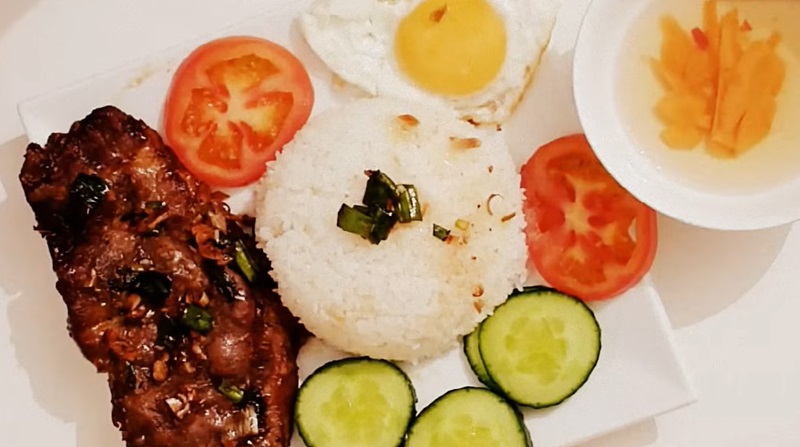
Cơm tấm is a popular Vietnamese dish that revolves around tender and flavorful grilled pork. This dish typically consists of broken rice, which is a type of rice with smaller grains, accompanied by various toppings and sauces. The star of the dish is the grilled pork, which is marinated in a combination of fish sauce, garlic, and other aromatic spices. The pork is then grilled to perfection, resulting in juicy and slightly charred slices of meat. Cơm tấm is often served with a variety of accompaniments such as pickled vegetables, cucumber slices, and fresh herbs like mint and cilantro. It is also common to find a fried egg on top of the rice, adding an extra layer of richness to the dish.
Bun Cha
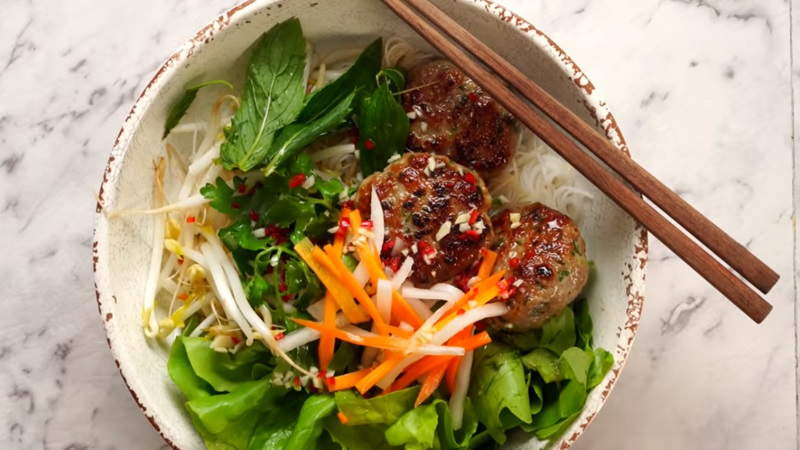
Bún chả, a Vietnamese culinary delight pronounced as [ɓǔn ca᷉ː], is a flavorsome dish tracing its roots back to Hanoi, Vietnam. This delectable creation features grilled pork paired harmoniously with rice noodles (bún). In the traditional presentation, succulent pieces of grilled fatty pork, known as "chả," are artfully arranged over a bed of tender white rice noodles. The dish is further elevated with a vibrant assortment of fresh herbs, creating a symphony of textures and tastes. To enhance the dining experience, a side dish of dipping sauce accompanies this delightful ensemble. Bún chả encapsulates the essence of Vietnamese cuisine, offering a balance of grilled goodness, noodle delicacy, and aromatic herbs, making it a cherished and iconic dish in Vietnamese gastronomy.
Gỏi Cuốn
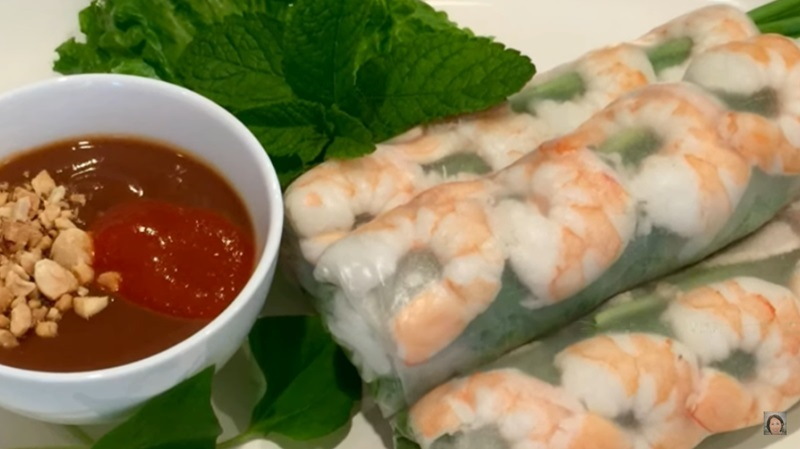
Gỏi cuốn, also known as nem cuốn, salad roll, summer roll, or fresh spring roll, stands as a quintessential Vietnamese dish celebrated for its unique preparation. Comprising a medley of bún (rice vermicelli), pork, prawns, vegetables, and other flavorful ingredients, this delicacy is elegantly enclosed in bánh tráng, commonly recognized as rice paper or cold roll. In contrast to spring roll variations originating from China, Gỏi cuốn is a distinct Vietnamese creation that exclusively utilizes bánh tráng. The rice paper is delicately moistened before being laid flat, and the desired ingredients are artfully arranged on top. The assembly is then skillfully rolled, creating a fresh and enticing Gỏi cuốn. This delectable roll can be savored with tương xào, a blend of ground tương, coconut water, garlic, sugar, chili powder, and ground peanuts, or paired with peanut sauce or other Vietnamese dipping sauces like nước chấm, a condiment featuring fish sauce. Gỏi cuốn, with its vibrant combination of textures and flavors, exemplifies the rich culinary heritage of Vietnam.
Chả Lụa

Chả lụa, commonly known as Vietnamese pork sausage, holds a special place as a beloved and flavorful delicacy in Vietnamese culinary traditions. Crafted from ground pork intricately blended with an array of spices, the mixture undergoes a meticulous process. It is then expertly shaped into a cylindrical form and tightly enveloped in either banana leaves or foil to preserve its shape and moisture. The wrapped chả lụa is subjected to the transformative processes of steaming or grilling, resulting in a fully cooked state characterized by a delectably smoky and subtly sweet flavor. The core ingredients of garlic, fish sauce, sugar, and black pepper infuse the pork, while variations may introduce elements like mushrooms, onions, or lemongrass for an extra layer of taste and aroma. Post-cooking, the chả lụa is delicately sliced into thin rounds, ready to be enjoyed alongside an assortment of accompaniments such as fresh herbs, lettuce, cucumber, pickled vegetables, and rice paper wrappers. This thoughtful assembly creates a harmonious interplay of textures and flavors, making it a sought-after choice for Vietnamese spring rolls or as a standalone dish. Appreciated for its tender and succulent texture, alluring fragrance, and savory undertones, chả lụa stands out as a versatile delight suitable as an appetizer, main course, or sandwich filling, whether enjoyed hot or cold—a flavorful Vietnamese pork dish celebrated by many.
Bánh Chưng
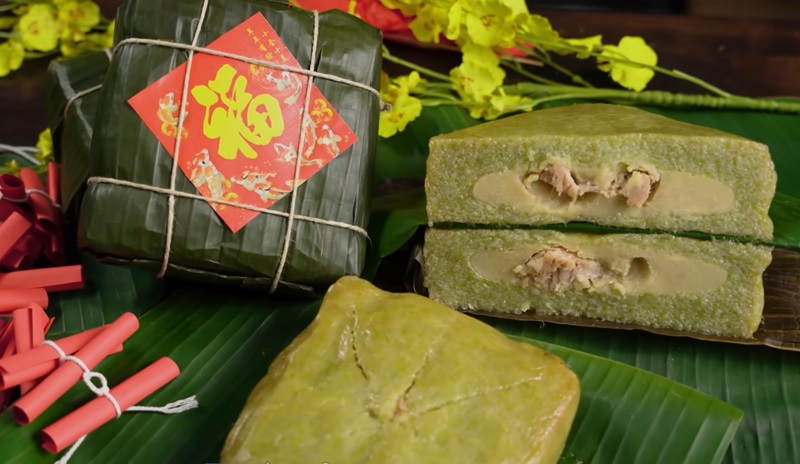
Bánh chưng, a cherished Vietnamese tradition, takes center stage during the Lunar New Year, commonly known as Tet. This square-shaped rice cake is a harmonious blend of glutinous rice, mung beans, and pork, encapsulated in the fragrant embrace of banana leaves. To craft bánh chưng, glutinous rice undergoes an overnight soak, later harmonized with cooked mung beans. The layers unfold with marinated pork, seasoned with fish sauce, pepper, and garlic, all meticulously packed into a square mold and cocooned in banana leaves. The ensuing journey involves boiling the cake for several hours, allowing the rice to attain tenderness and the flavors to intertwine seamlessly. Bánh chưng unveils a tapestry of rich and savory notes, with the pork contributing a delectable meaty essence. The rice, soft and sticky, pairs elegantly with the creamy texture of mung beans. Banana leaves not only lend a pleasing aroma but also play a crucial role in preserving the cake's moisture during the cooking process.
Chả Giò
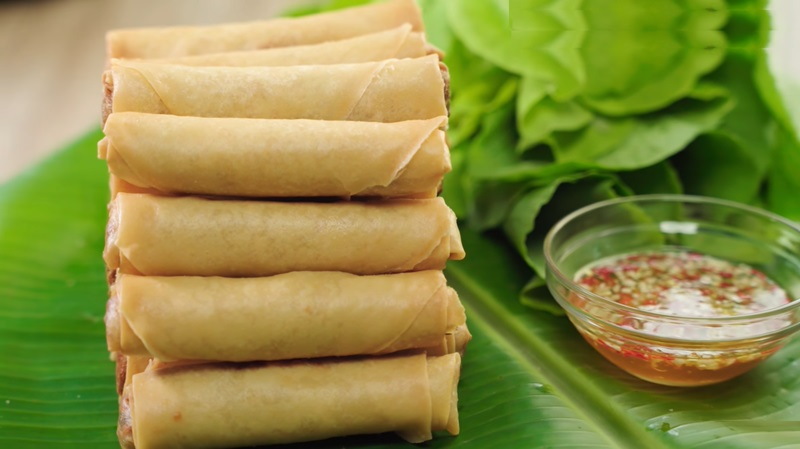
Chả giò, also known as Vietnamese spring rolls or egg rolls, is a popular and delicious pork dish in Vietnamese cuisine. These crispy and flavorful rolls are made by wrapping a mixture of ground pork, vegetables, and spices in rice paper, which is then deep-fried until golden brown. The filling for chả giò typically consists of ground pork, shredded carrots, cabbage, onions, mushrooms, and bean sprouts, seasoned with a combination of fish sauce, soy sauce, garlic, and pepper. The mixture is then carefully rolled and sealed in the rice paper wrappers. When cooked, chả giò becomes delightfully crispy on the outside, while the inside remains moist and packed with savory flavors. It is often served with a variety of accompaniments, such as fresh herbs like mint and cilantro, lettuce leaves, and a dipping sauce made from fish sauce, lime juice, sugar, and chili. Chả giò is a versatile dish that can be enjoyed as an appetizer, snack, or even as part of a main course in Vietnamese cuisine. Its combination of textures, flavors, and dipping sauces make it an irresistible and popular choice among both locals and visitors alike.
Bún Thịt Nướng
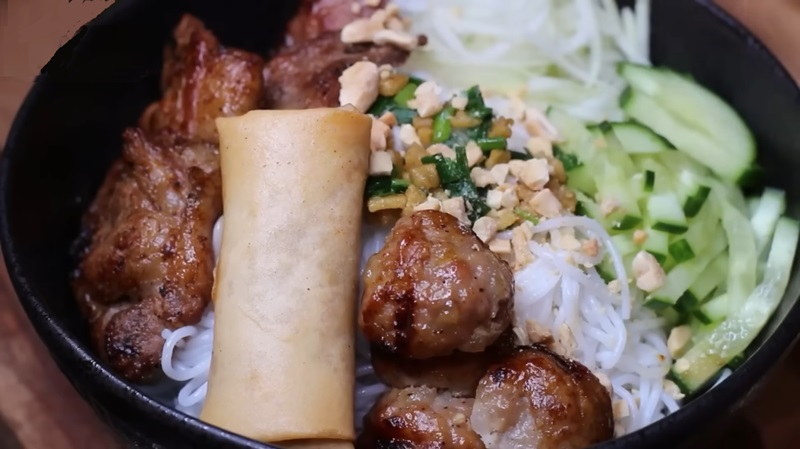
Bún thịt nướng is a popular Vietnamese dish that features grilled pork served over a bed of vermicelli noodles and fresh vegetables. This dish is a harmonious blend of flavors and textures, making it a favorite among locals and visitors alike. The star of the dish is the perfectly grilled pork, which is marinated in a combination of lemongrass, garlic, fish sauce, sugar, and other spices. The marinade infuses the meat with a delightful aroma and a slightly caramelized crust. The pork is then thinly sliced and placed on top of a bed of soft and delicate vermicelli noodles. To complement the pork, a variety of fresh vegetables and herbs are added to the dish. These typically include shredded lettuce, bean sprouts, cucumbers, and aromatic herbs like mint and cilantro. The final touch is a drizzle of tangy and savory nước chấm sauce, which adds a burst of flavor to the dish. Bún thịt nướng is not only delicious, but it also offers a balance of textures and flavors. The tender grilled pork, the soft noodles, the crunchy vegetables, and the zesty sauce all come together to create a satisfying and refreshing meal. It is no wonder that this dish is a beloved classic in Vietnamese cuisine.
Bánh Bao
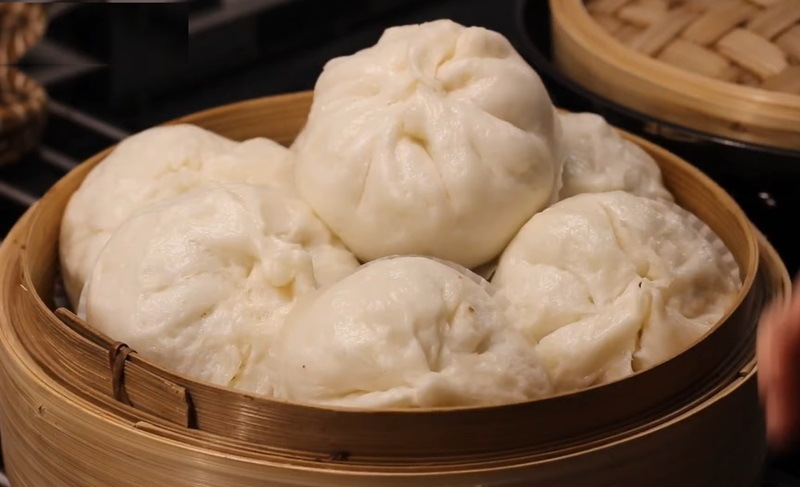
Bánh bao, a beloved Vietnamese culinary gem, is a steamed bun cherished for its soft and fluffy exterior enfolding a delectable pork filling. This culinary delight holds a special place in Vietnamese cuisine, earning admiration from both locals and tourists. Crafted from a blend of wheat flour, yeast, sugar, and water, the Bánh bao bun boasts a light and airy texture, inviting delight with every bite. The savory pork filling, seasoned to perfection, incorporates minced onions, mushrooms, and sometimes carrots or vermicelli noodles, creating a fragrant and savory medley of flavors. The steaming process, a key to perfection, not only refines the bun's delicate texture but also harmonizes the pork and other ingredients, resulting in an irresistible taste experience. Bánh bao is versatile, serving as a delightful snack or an integral part of a meal. Whether found in street food stalls, bustling markets, or inviting restaurants across Vietnam, this culinary masterpiece is typically served hot. Enjoyed on its own or complemented by soy sauce or chili sauce, Bánh bao beckons both pork enthusiasts and those eager to explore the wonders of Vietnamese cuisine. A must-try, this dish promises an unforgettable and enticing journey for your taste buds.
Bánh Bột Lọc
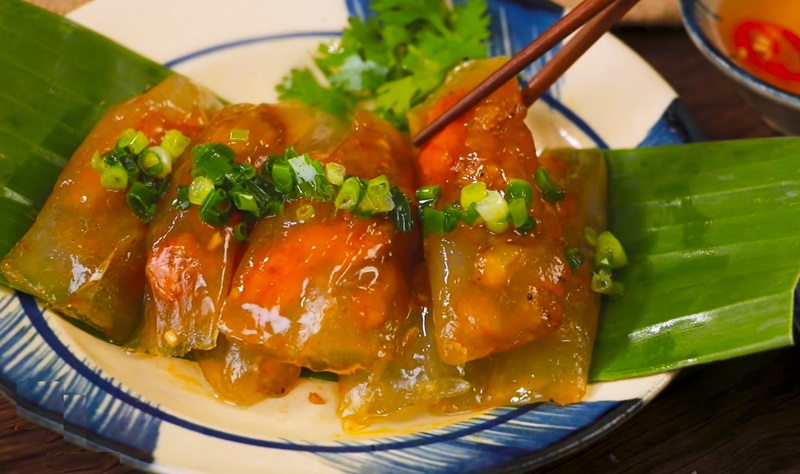
Bánh bột lọc is a traditional Vietnamese dish made with pork. It is a small, translucent, and chewy dumpling made from tapioca flour and filled with seasoned ground pork. This dish originated in the central region of Vietnam and has become a popular street food and snack. To make bánh bột lọc, the tapioca flour is mixed with water to form a sticky dough, which is then rolled into small balls. The pork filling is made by sautéing ground pork with garlic, onions, and various spices such as fish sauce and pepper. The filling is then wrapped in the dough, forming small dumplings. The dumplings are then steamed until they become translucent and the pork filling is cooked through. Bánh bột lọc is typically served with a dipping sauce made from fish sauce, chili peppers, garlic, and lime juice. The dish is often garnished with fresh herbs such as cilantro or green onions. Bánh bột lọc is loved for its unique texture, with the chewy dumpling exterior and the flavorful pork filling. It is a delightful combination of savory and slightly sweet flavors. Whether enjoyed as a snack or part of a meal, bánh bột lọc is a beloved dish that showcases the deliciousness of Vietnamese cuisine.
Nem Nướng
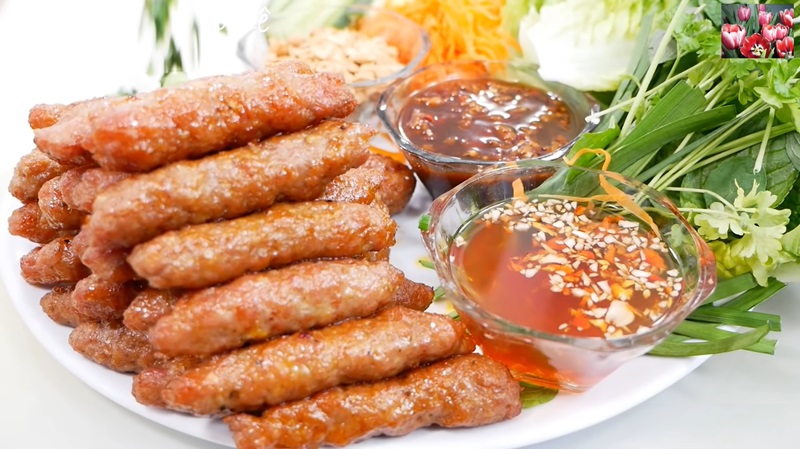
Nem nướng is a popular Vietnamese pork dish that is loved for its flavorful and succulent taste. The dish is made by marinating ground pork with a combination of garlic, shallots, fish sauce, sugar, and other aromatic spices. The marinated pork is then shaped into small, cylindrical patties and grilled over charcoal until they turn golden brown and crispy on the outside. The key to the deliciousness of nem nướng lies in its unique combination of flavors. The sweetness from the sugar balances perfectly with the umami of the fish sauce, while the garlic and shallots add a savory and aromatic touch. The grilling process adds a smoky note that enhances the overall taste of the dish. Nem nướng is commonly served as a main course or as a filling in Vietnamese spring rolls, along with fresh herbs, lettuce, rice noodles, and a dipping sauce made from fish sauce, lime juice, sugar, garlic, and chili. The combination of different textures and flavors creates a harmonious and satisfying eating experience. Whether enjoyed on its own or in a spring roll, nem nướng is a dish that showcases the vibrant and bold flavors of Vietnamese cuisine. Its delicious taste and versatility make it a favorite among locals and visitors alike.
Chả Trứng
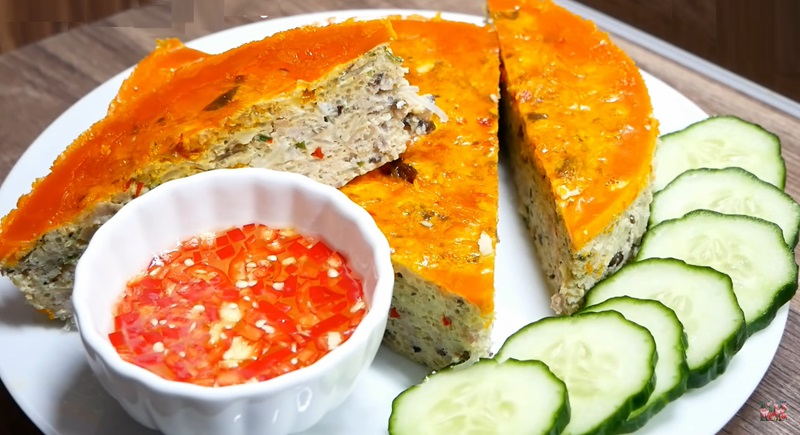
Chả trứng is a popular Vietnamese pork dish that combines ground pork and eggs into a flavorful and satisfying meal. The dish starts with ground pork that is seasoned with fish sauce, garlic, shallots, and black pepper. The mixture is then shaped into small patties or balls and wrapped in banana leaves for added flavor and moisture. Next, the patties are pan-fried until golden brown and cooked through. As the pork cooks, the eggs are beaten and poured over the pork patties, creating a delicious and creamy sauce. The eggs cook and set around the pork, forming a luscious and savory coating. Chả trứng is typically served with steamed rice, fresh herbs, and a side of dipping sauce made from fish sauce, lime juice, sugar, and chili. The combination of tender and flavorful pork, creamy eggs, and aromatic herbs creates a harmonious balance of flavors and textures. This dish is not only delicious but also versatile, as it can be enjoyed as a main course or as a side dish in a larger Vietnamese meal. Chả trứng showcases the skillful use of ingredients and techniques in Vietnamese cuisine, making it a must-try for any food lover.
Bánh Tẻ
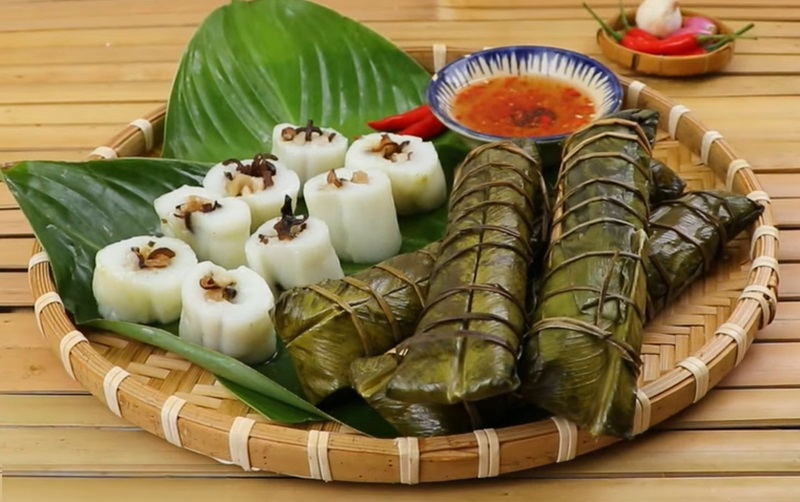
Bánh tẻ is a traditional Vietnamese dish that features succulent and flavorful pork. It is a popular dish in the central region of Vietnam, particularly in Hue. Bánh tẻ is made by marinating pork belly or pork shoulder with a mixture of garlic, shallots, fish sauce, sugar, and black pepper. The pork is then wrapped tightly in banana leaves and steamed until tender and infused with aromatic flavors. The result is tender and juicy pork that is bursting with savory and sweet flavors. The banana leaves impart a subtle earthy taste to the dish, enhancing the overall experience. Bánh tẻ is typically served with a side of pickled vegetables, rice paper, and a variety of fresh herbs such as mint, lettuce, and basil. To enjoy Bánh tẻ, one can assemble a delicious roll by wrapping a piece of steamed pork with rice paper, adding a few herbs and pickled vegetables, and dipping it into a tangy fish sauce-based dipping sauce. The combination of textures and flavors in each bite is truly delightful and makes Bánh tẻ a beloved dish among locals and tourists alike.
Bì Cuốn
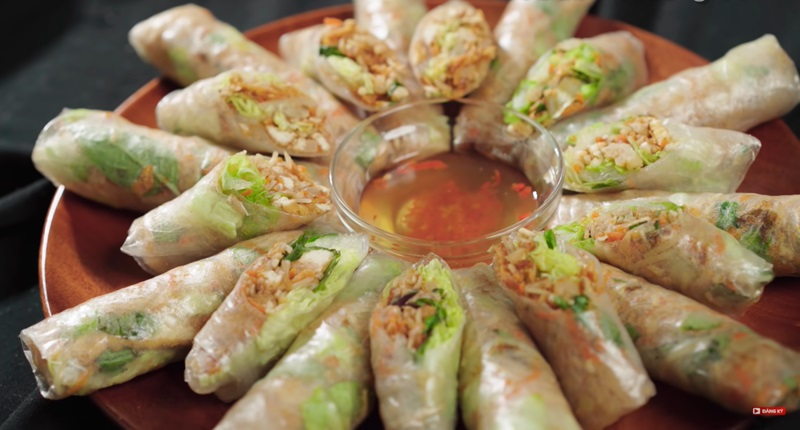
Bì cuốn is a popular Vietnamese dish that showcases the country's love for fresh and healthy ingredients. This dish consists of thinly sliced pork belly, marinated in a combination of fish sauce, garlic, and other seasonings. The marinated pork is then grilled to perfection, resulting in a smoky and flavorful meat. To assemble the dish, the grilled pork is placed on a bed of vermicelli rice noodles, along with a variety of fresh herbs like mint, cilantro, and lettuce. The dish is typically served with a side of nuoc cham dipping sauce, which adds a tangy and slightly sweet flavor to complement the savory pork. What makes bì cuốn truly unique is the inclusion of crunchy fried spring roll wrappers. These wrappers add a delightful texture to each bite, creating a satisfying contrast with the tender pork and soft noodles. The combination of flavors and textures in bì cuốn makes it a refreshing and delicious dish that is enjoyed by locals and visitors alike.
Sườn Nướng
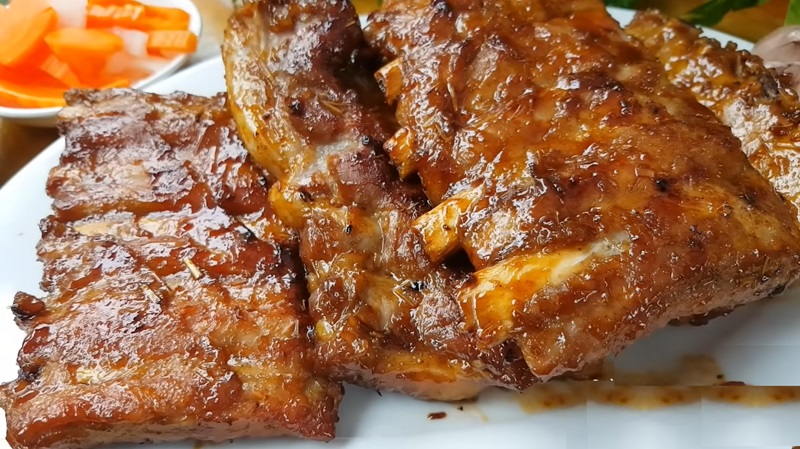
Sườn nướng, also known as grilled pork ribs, is a traditional Vietnamese dish that is a true delight for meat lovers. This dish is characterized by its succulent, tender, and flavorful pork ribs that are marinated with a blend of aromatic spices and seasonings before being grilled to perfection. The marinating process is crucial to infuse the meat with incredible flavors. A typical marinade for sườn nướng includes ingredients like fish sauce, garlic, lemongrass, honey, and soy sauce. This combination creates a balance of sweet, savory, and tangy flavors that complement the natural richness of the pork. Once marinated, the pork ribs are grilled over charcoal until they achieve a beautiful caramelized exterior and juicy interior. The grilling process imparts a smoky aroma and adds a delightful charred taste to the dish. Sườn nướng is often served with a side of steamed rice, pickled vegetables, and a dipping sauce made from fish sauce, lime, chili, and garlic. The combination of the tender pork, fragrant marinade, and tangy dipping sauce creates a symphony of flavors that tantalizes the taste buds. Whether enjoyed as a main course or as part of a larger meal, sườn nướng is a beloved Vietnamese pork dish that showcases the country's mastery of grilling techniques and ability to create dishes bursting with flavor.
Hog Maw
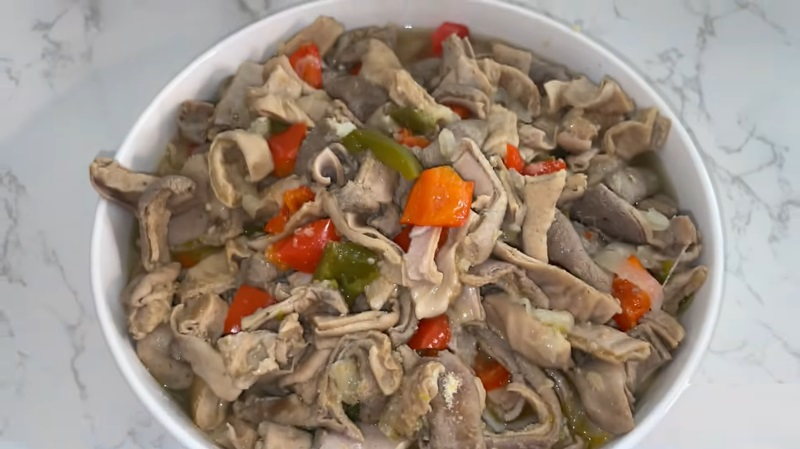
Hog maw is not a Vietnamese dish; rather, it is a traditional dish originating from Pennsylvania Dutch cuisine in the United States. Hog maw is made by stuffing the stomach lining of a pig with a mixture of sausage, potatoes, cabbage, and sometimes other ingredients. The dish is then baked or simmered until everything is cooked through. As mentioned before, Hog Maw is not a Vietnamese dish per se, however, it has grown fairly popular in the region due to its flavorsome taste.


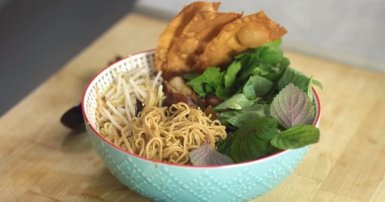
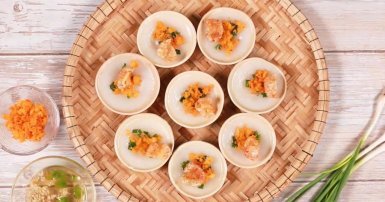
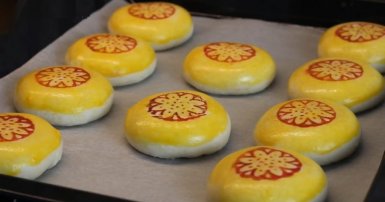

-1709813013.jpg)


